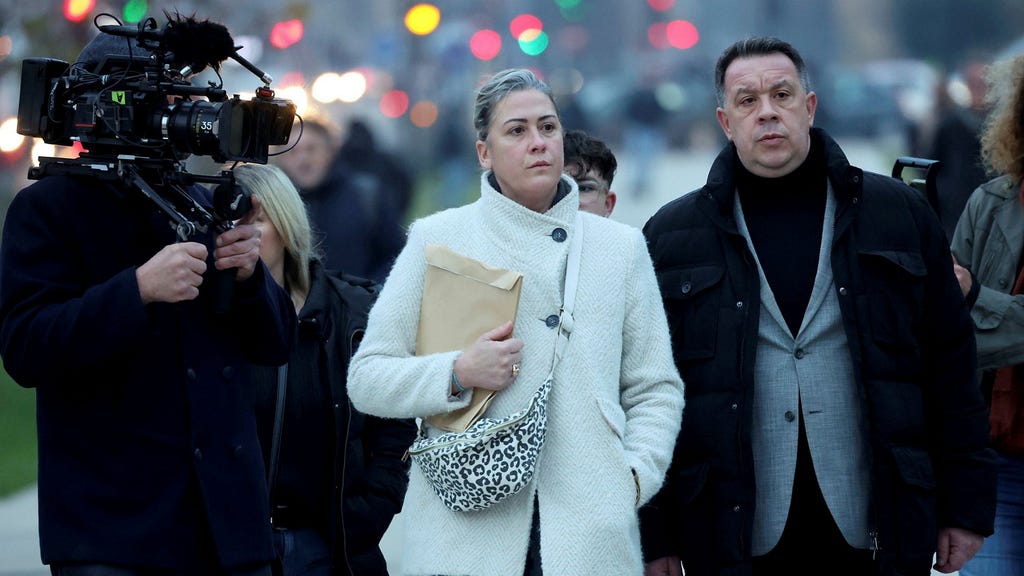Dominique Pelicot remains an enigma, a figure shrouded in a chilling duality. He presents as a devoted father, a loving husband, a respected member of his community. Yet, beneath this veneer of normalcy lurks a sinister undercurrent, the whispers of perverse acts and the chilling accusations of unspeakable crimes. The question that hangs heavy in the air is whether these two seemingly disparate personas can coexist within the same individual, or whether the monstrous side has completely consumed the man he once was. Is it possible for a loving father to also be a perpetrator of horrific abuse? Or is the paternal affection a carefully constructed facade, a manipulative tactic designed to conceal the true depravity that lies beneath? This dichotomy presents a complex and disturbing puzzle, forcing us to confront the unsettling possibility that evil can lurk in the most unexpected places, masquerading as normalcy and exploiting the trust of those closest to it.
The difficulty in understanding Dominique Pelicot stems from the inherent human desire to categorize individuals as either good or bad, to neatly compartmentalize their actions and motivations. We struggle to reconcile the image of a caring father with the horrifying accusations leveled against him. This cognitive dissonance creates a chasm of disbelief, a reluctance to accept the possibility that someone capable of such tenderness could simultaneously harbor such darkness. The human mind yearns for simplicity, for clear-cut distinctions between right and wrong, but the reality of human nature is often far more complex and unsettling. Pelicot’s case forces us to confront this uncomfortable truth, challenging our preconceived notions about good and evil and forcing us to grapple with the unsettling notion that these opposing forces can reside within the same individual.
Furthermore, the complexities of Pelicot’s case are compounded by the insidious nature of abuse itself. It often thrives in secrecy, hidden behind closed doors and veiled by a carefully constructed web of manipulation and control. The abuser may present a charming and charismatic exterior to the outside world, while simultaneously subjecting their victims to unspeakable horrors in private. This dichotomy makes it incredibly difficult for outsiders to comprehend the full extent of the abuse, as they are only privy to the carefully curated public persona. This dynamic is further complicated by the power imbalances that often exist within abusive relationships, where the victim may feel silenced, intimidated, and unable to speak out against their abuser. Consequently, the true nature of the abuse may remain hidden for years, allowing the perpetrator to continue their reign of terror unchecked.
The accusations against Pelicot paint a grim picture of a man who exploited his position of power and trust to inflict unimaginable harm upon his victims. The details of the alleged abuse are deeply disturbing, showcasing a pattern of calculated cruelty and a complete disregard for the well-being of those he was supposed to protect. The sheer depravity of the accusations makes it difficult to reconcile them with the image of the loving father and husband that Pelicot projected to the world. This stark contrast underscores the profound deception at the heart of the case, highlighting the lengths to which abusers will go to maintain their facade of normalcy and avoid accountability for their actions.
In analyzing the case of Dominique Pelicot, it is crucial to avoid sensationalizing the details or engaging in speculation. The focus must remain on the victims and their experiences, ensuring that their voices are heard and that justice is served. It is essential to approach the case with empathy and understanding, recognizing the complex trauma that victims of abuse endure. Furthermore, it is important to avoid perpetuating harmful stereotypes about abusers and victims, recognizing that abuse can occur in any family, regardless of socioeconomic status, race, or religion. The focus should be on providing support and resources to victims, holding perpetrators accountable, and working towards a future where such abuse is no longer tolerated.
Ultimately, the case of Dominique Pelicot serves as a stark reminder of the insidious nature of abuse and the importance of vigilance. It highlights the need for open communication within families and communities, creating an environment where victims feel safe to come forward and where perpetrators are held accountable for their actions. It also underscores the importance of education and awareness, equipping individuals with the knowledge and tools to recognize the signs of abuse and intervene effectively. While the complexities of Pelicot’s case may never be fully understood, it serves as a chilling reminder of the darkness that can lurk beneath the surface of seemingly ordinary lives and the devastating impact it can have on its victims.














